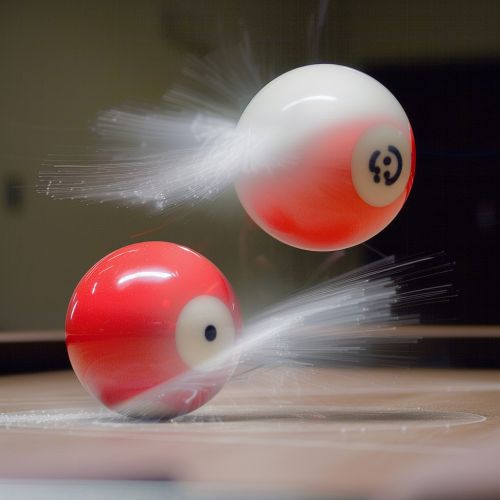Conservation of Momentum
Introduction
The Conservation of Momentum is a fundamental concept in physics that describes the motion of objects. It states that the total momentum of a closed system is constant unless acted upon by an external force. This principle is a direct consequence of Newton's third law of motion, which states that for every action, there is an equal and opposite reaction.
Definition
Momentum, denoted by the letter 'p', is a vector quantity that is defined as the product of an object's mass and its velocity. Mathematically, it is expressed as p = mv, where 'm' represents the mass of the object and 'v' is its velocity. The conservation of momentum states that the total momentum before an event must be equal to the total momentum after the event, provided no external forces act on the system.
Derivation from Newton's Laws
The principle of conservation of momentum can be derived from Newton's second law of motion, which states that the rate of change of momentum of an object is directly proportional to the force applied and occurs in the direction in which the force is applied. If two objects interact, the force exerted by the first object on the second is equal and opposite to the force exerted by the second object on the first. Therefore, the total momentum of the two objects remains constant.
Applications of Conservation of Momentum
The principle of conservation of momentum has numerous applications in various fields of physics, including mechanics, quantum mechanics, and relativistic physics.
Mechanics
In mechanics, the conservation of momentum is used to analyze collisions. There are two types of collisions: elastic and inelastic. In an elastic collision, both momentum and kinetic energy are conserved. In an inelastic collision, only momentum is conserved while kinetic energy is not.
Quantum Mechanics
In quantum mechanics, the conservation of momentum is used to explain phenomena at the atomic and subatomic levels. For example, it is used in the analysis of particle collisions in accelerators and the behavior of particles in a quantum field.
Relativistic Physics
In relativistic physics, which deals with objects moving at speeds close to the speed of light, the conservation of momentum is modified to include the effects of special relativity. The relativistic momentum is given by p = γmv, where γ is the Lorentz factor.
Conservation Laws in Physics
The conservation of momentum is one of the many conservation laws in physics. These laws, which include the conservation of energy, charge, and angular momentum, are fundamental to our understanding of the physical world. They are based on symmetries in nature and are described by Noether's theorem.
Conclusion
The principle of conservation of momentum is a fundamental concept in physics that has wide-ranging applications. It is a powerful tool for analyzing the motion of objects and is central to our understanding of the physical world.


